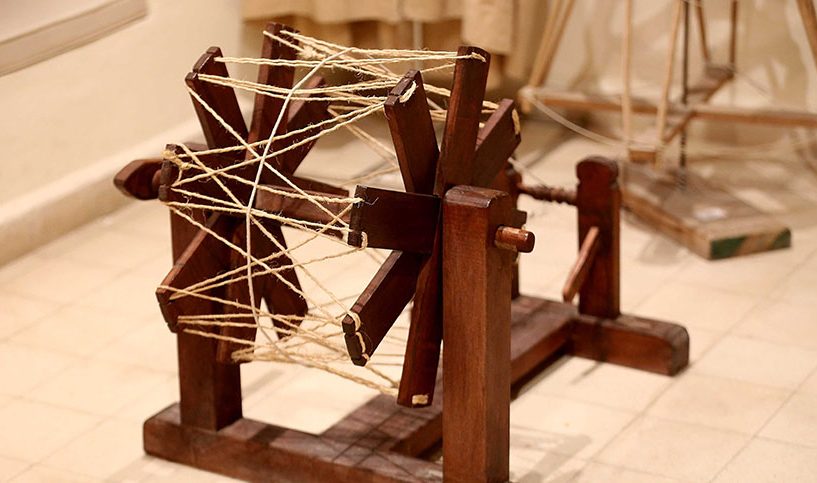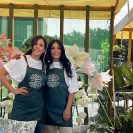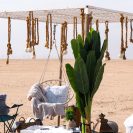A couple of weeks ago I had fallen into a weaving rabbit hole. I was researching looms, techniques, materials and designs and then I came across Sadu weaving resources. I had always thought that Sadu was about the motifs and colors, but it turns out that the technique itself originated in the region and is unique to it.
The craft is said to be an ancient tribal weaving craft and is a way of expressing the cultural heritage and history of nomads in the Arabian gulf region. The fabric created is instantly recognizable and iconic. The deep reds and oranges are offset by a deep black and a bright white, with beige often included. Long geometric patterns with symbols of horses, camels, combs, and snakes lie in bands between the colors.
Ironically, I have been to Sadu House. The Al Sadu Society opened it in 1980 to preserve the ethnic handcraft and protect history. I was even aware that they hold regular workshops and exhibits. Yet, it had never clicked in my head how important and interesting the craft was.
Weaving is a slow craft, much like life in the past and creating a Sadu weaving was arduous and time consuming. Starting with shearing sheep, preparing the wool, cleaning and dyeing it using natural colors and then spinning it into fine yarn, before the actual weaving can even begin. The women used a floor loom which could be easily used in a tent and just as quickly packed away for moving around the desert.
Sadu means “extension of the hand,” but it also refers to the fabric and the loom used to create it. Talk about meta! According to a paper by Keireine Canavan and Ali Alnajadah published in the Journal of Cloth and Culture in 2015; “The complex practice of weaving was difficult for the women, who had received no conventional education or training, as patterns and designs were memorized and not recorded or written down. It requires great skill and concentration to maintain pattern accuracy, but provided the opportunity for skillful individualism and expressive innovation.”
The finished fabric was used for so many things from tents to protect from the elements to rugs and storage bags. The nomad travellers were extremely resourceful and everything they carried needed to serve a utilitarian purpose, yet the skillful women who made these items knew how to add their own aesthetic and tell a story that would be passed down for generations. They understood the landscape and knew how to wield it to serve their needs.
We see the sadu being thrown to decorate kashtas and diwaniyas and while I love seeing it, I wish more people paid more attention to the art itself and the people who created it. Maybe we need a weaving class at school so we can learn how our ancestors lived and to appreciate our own origin story so we can carry some of that into the future and find ways to incorporate it into our everyday lives and not just on camping trips.
Follow @saduhouse on Instagram for more information. The cultural center is located on the Arabian Gulf Road and is open every day from 10 am – 1 pm and is closed on Friday.











